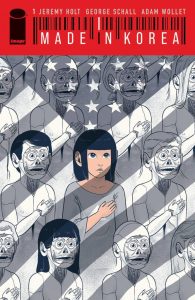
In Made in Korea #1 by Jeremy Holt and George Schall, with lettering by Adam Wollet, readers will enter a world where those who can afford them can purchase artifical surrogate children, called “proxies.” While Made in Korea #1 will be arriving at your local comic shop next Wednesday, May 26th, 2021, you can get your first taste of the suspenseful science fiction story right now.
The Beat caught up with Holt and Schall over email to discuss the genesis of Made in Korea, find out more about how having an artificial protagonist changes the story (if it does change the story), and discover which atecedents influence the narrative. Plus, The Beat is proud to present exclusive process pages, giving you a glimpse into the steps that go into Made in Korea‘s unique aesthetic!
AVERY KAPLAN: Can you tell us about the genesis of Made in Korea?
JEREMY HOLT: Believe it or not but the genesis for Made in Korea began with a tattoo. For over a decade I contemplated on getting a “MADE IN KOREA” tattoo, and I finally settled on a UPC code—that scans as my birth year—with 한국산 embedded along its bottom. Admiring those characters for a few years helped inspire me to reevaluate why I had been writing white, male, cis protagonists almost exclusively. In addition, being a non-binary transracial adoptee enabled me to flip the script on how specific narratives I had been telling myself regarding my identity.
As a massive fan of clever AI narratives like Alex Garland’s Ex Machina, Neill Blomkamp’s C.H.A.P.P.I.E., and Grant Sputore & Michael Lloyd Green’s I Am Mother to name a few, I realized that at the core of every AI story is one exploring the adoption experience. From there I was inspired to reinvent the wheel of this beloved topic, and pulled from a myriad of personal experiences that helped influence and ultimately shape the story of Made in Korea.
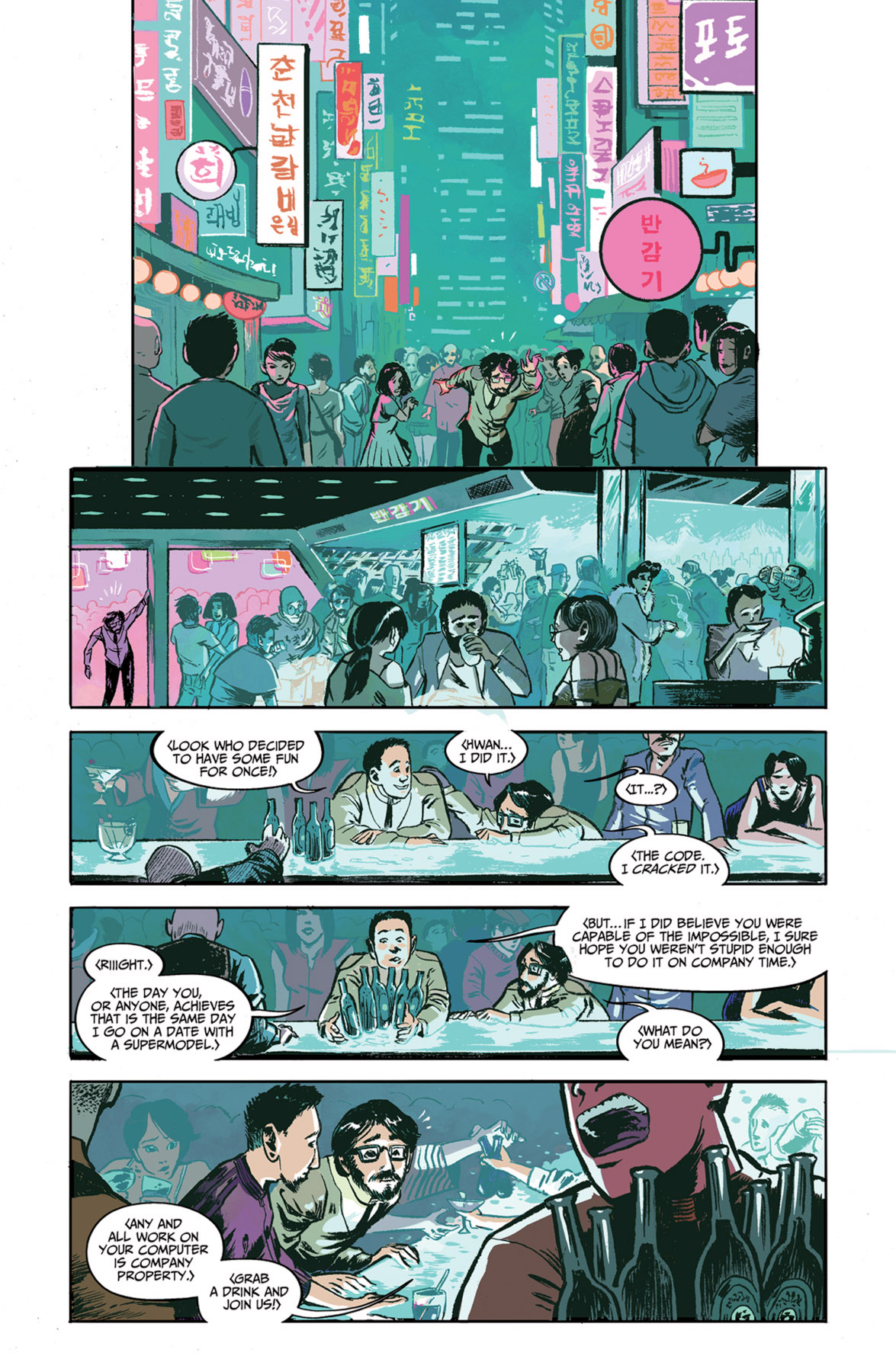
KAPLAN: Were there any elements of the characters or story, either developmentally or visually, which posed a particular challenge?
HOLT: I think the most challenging element for me was finding an artistic style that both complimented, and more importantly elevated my scripts. I also needed to find a collaborator who shares my aesthetics when it comes to depicting a futuristic world that feels both new and grounded simultaneously. My worries evaporated instantly when my friend (and co-creator on another project) Felipe Cunha recommended his friend George Schall to me.
GEORGE SCHALL: I wouldn’t say anything posed a very particular challenge because everything was very fun to dig into references for and sketch and develop, but I guess in my case one thing is that I was always trying to stray away from what we already have in our collective mind in terms of sci-fi aesthetics. We already live in the 80s/90s sci-fi future dystopia nowadays, so as much as I like the way those things look I think our book ended up benefiting from something more grounded and more adapted to its themes and reality than going too hard on the cyberpunk look.
KAPLAN: Made in Korea introduces us to a world that seems fully realized! What went into creating such a plausible vision of the not-too-distant future?
HOLT: The world of Made in Korea is built upon the foundation of hyper-real surrogate children known as proxies. Once I designed a set of rules and guidelines for all proxies that the narrative had to obey, this gave my story and George’s art free-range and a seemingly endless supply of creative opportunities. As for plausibility, I used the juxtaposition of a not-too-distant future featuring subtle differences to our present day, and contrasted that with present day conflicts that this not-too-distant future hasn’t had to address for half a century.
SCHALL: We both looked a lot at interesting solutions for current societal issues, and then thought what cool concepts would derive from that. As opposed to trying to guess the future too far ahead and maybe come with solutions that seem too unreal or less grounded. And by solutions I mean very simple things, from architecture to apps, to fashion, to adoption, to gun control etc.
KAPLAN: Does the fact that a main character is an artificial intelligence fundamentally change the nature of the story (as compared to a “biological character”)? Alternatively: is this an arbitrary differentiation?
HOLT: I don’t think it does. The debate of nature vs. nurture remains applicable and relevant to both the characters in this story, as well as the reader. The question of what defines a true AI system as being human piggybacks off the preceding question of what defines parenthood as either biological or adoptive? In my opinion, the differentiation is meaningful and significant depending on one’s view on the topic.
KAPLAN: George, Made in Korea has a singular art style. Can you tell us about what went into developing the unusual look of this book? Was there a moment when you arrived at this (excellent) aesthetic?
SCHALL: Thank you for your compliment! I think the art style for this was both an evolution of things I wanted to test out – and hopefully ended up working – and the necessity to have a very clean aesthetic to the comic. I don’t often do things like taking out panel borders or making panel borders white, but as I kept testing things out that made a lot of sense for this story. We had a version of issue #1 that was very different in style – back in 2017 when we first started working on MIK, one that I later revisited a couple of years later. And I think that having pages already drawn for me to focus and experiment on style helped a lot in this case. The sort of wavy half-tones I use for shading for example were actually something I developed for another comic I’m working on right now, but also worked here way better than intended. So yeah, coming two years later to an already build up project and reworking it with a fresh mind definitely helped.
KAPLAN: Jeremy, I’ve had the pleasure of reading several issues of Made in Korea and while I do not wish to spoil anything, I will go so far as to say that the story takes turns that the reader will not be expecting. What went into crafting a narrative that contains multiple twists and turns?
HOLT: Great question! What went into crafting this stems from over a decade of retooling my writing process. Reflecting upon my seven previously published works, I have seen significant improvement in my storytelling abilities. Most notably, I’ve improved upon my character development, and was mindful of the entire cast’s concurrent arcs that needed to move, grow, and flow along with the overall story’s progression. The by-product of paying close attention to that is the multiple twists and turns that occur like a reliable heartbeat pumping life into the reading experience.
KAPLAN: Were there any comics (or stories in any medium) that were particularly inspirational for Made in Korea?
HOLT: Very curious to know George’s thoughts on this. As I mentioned earlier, there were a handful of filmmakers that served as direct influence on this story, but the most significant inspiration was my leaning into exploring feelings I’ve long held about being a transracial triplet adoptee. Based on very personal experiences that I’ve woven into the pages of Made in Korea, I made the deliberate choice to showcase the Asian-American experience through the lens of a science-fiction story. I believe representation matters in media, and wanted to feature characters that I would have love to have seen in comics when I was growing up.
SCHALL: Jeremy and I thought of the movie Her a lot when coming up with looks for the book. I personally refer a lot from the Ghost In The Shell series when it comes to themes relating to AI and transhumanism. There’s some stuff in MIK that definitely reminds me of Serial Experiments: Lain also. And I really like the designers’ and script writer’s approach of Deus Ex: Human Revolution‘s near-future concepts, I think they worked with a specialist in futurology and there’s a lot there that’s very thoughtful. The list probably goes on, but I think I feel good about those for now.
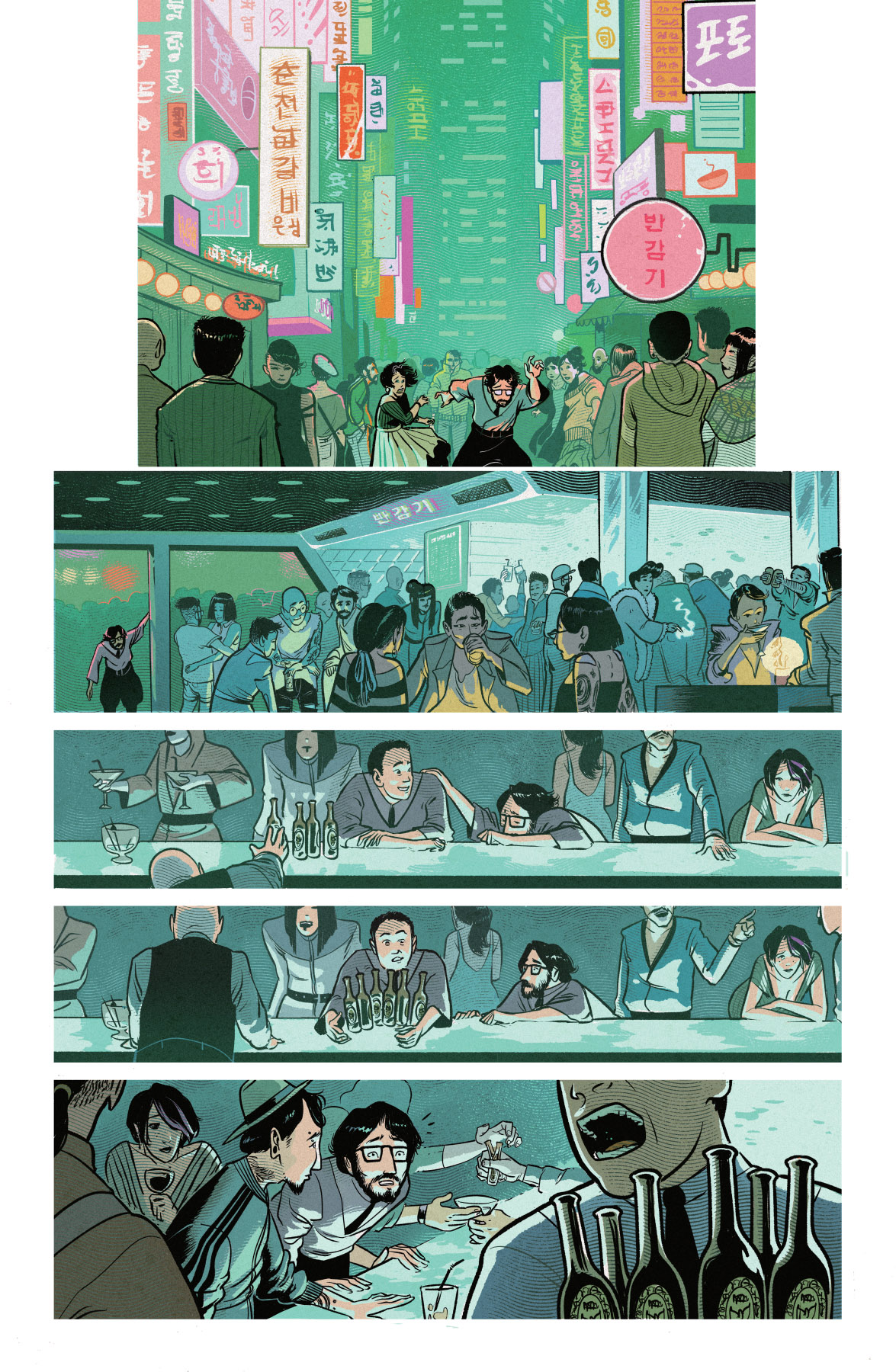
HOLT: Oooooo, that’s a fun thing to contemplate. I could see her learning quite a lot from Ava (Ex Machina), but think she’d probably enjoy hanging out with Wall-E the most.
SCHALL: As the resident anime fan, I’ll go with AstroBoy. Or Rush, from Megaman! I’d love to see them playing together.
KAPLAN: Is there anything else that you’d like me to be sure and include?
HOLT: Nothing comes to mind. I do want to thank you for the thoughtful questions and the opportunity for George to share their art process. I’m truly honored to have watched them level up over the years, and couldn’t be more proud of what we have crafted together.
SCHALL: Not that I can think of. I’d also like to thank you for your questions and for having us here. I hope people like the book once it comes out!
Made in Korea #1 will be available at your local comic shop beginning next Wednesday, May 26th, 2021.


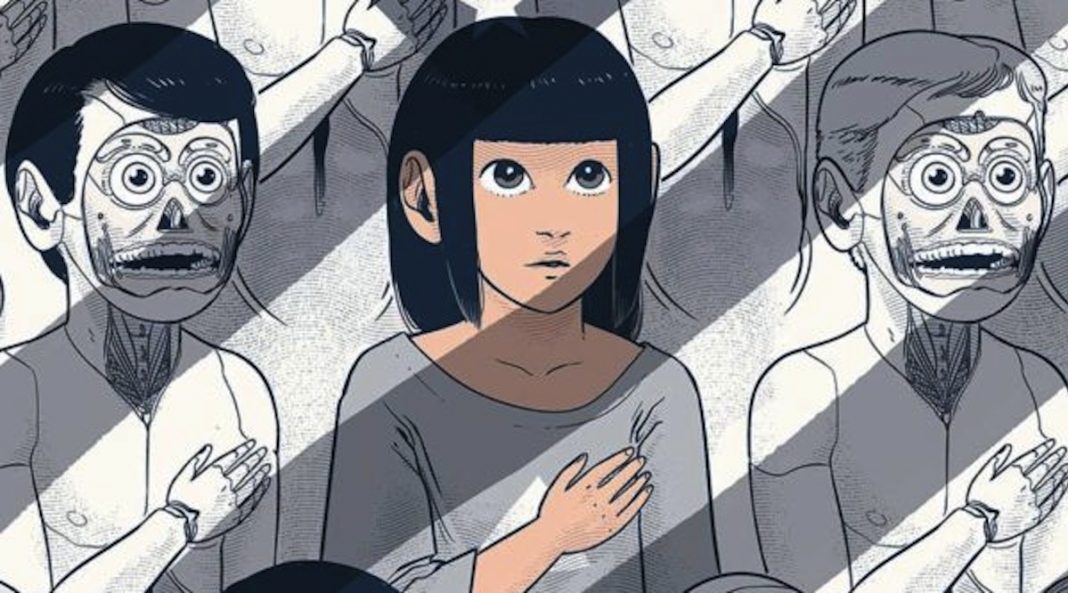
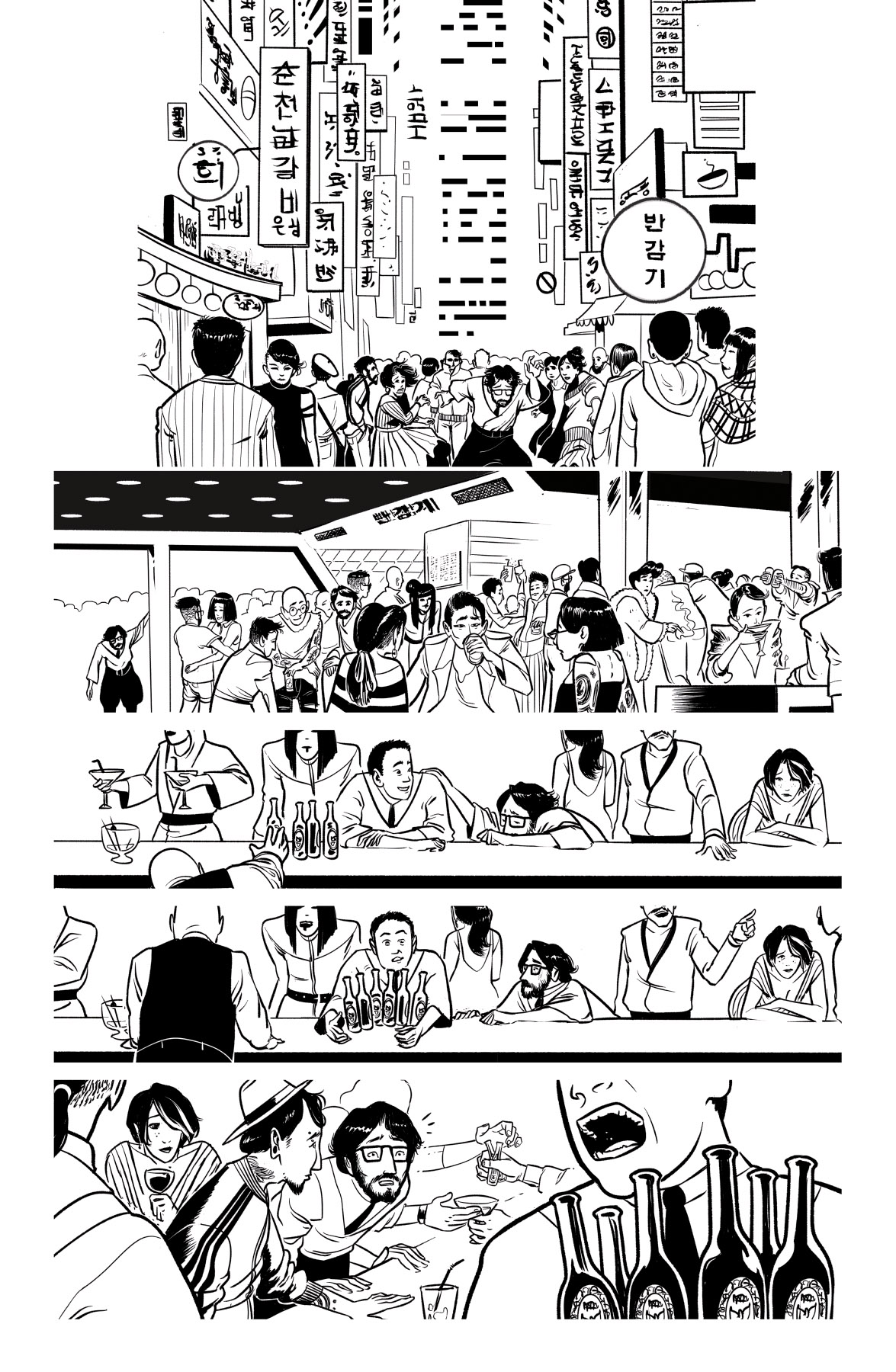
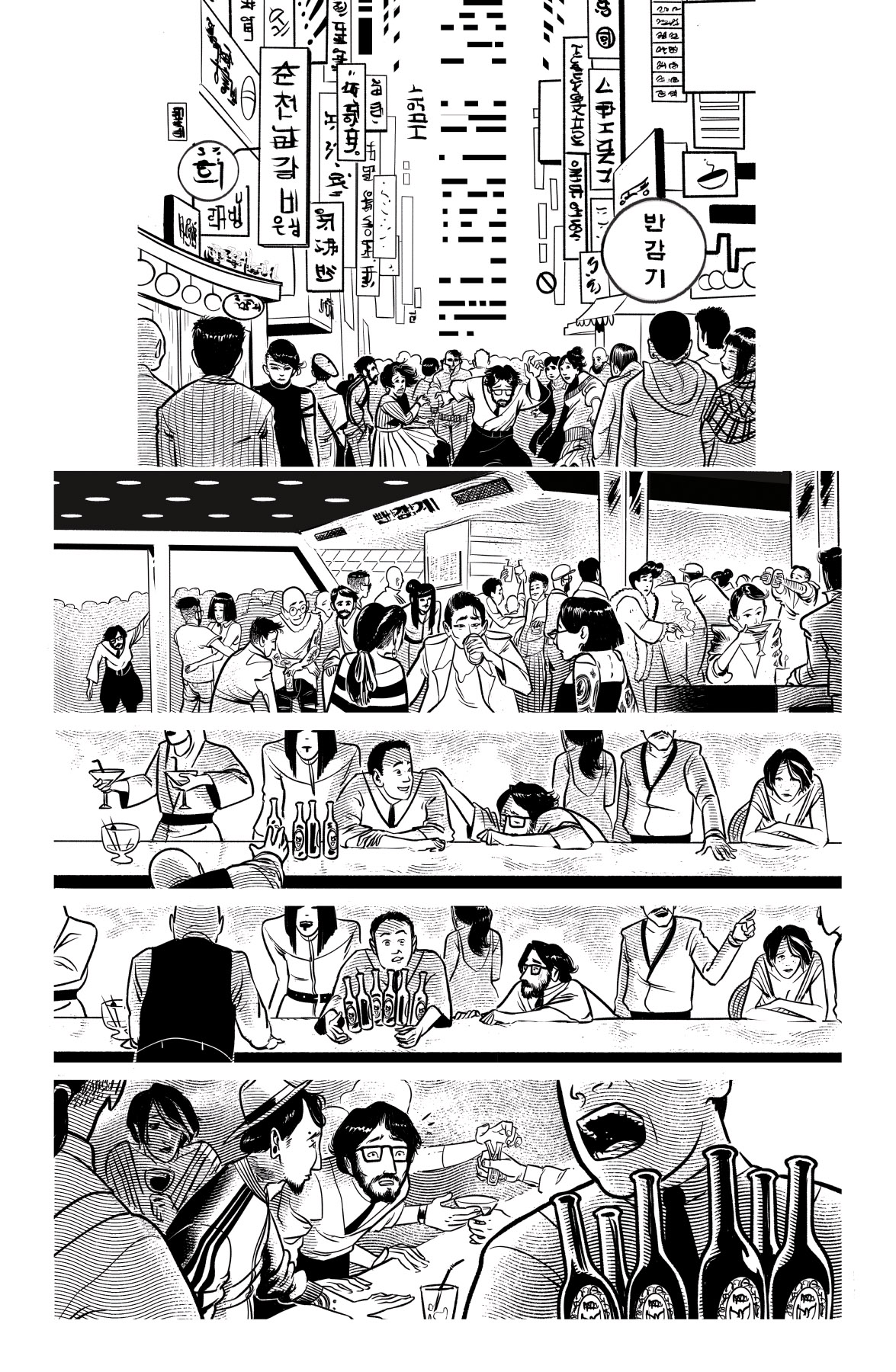
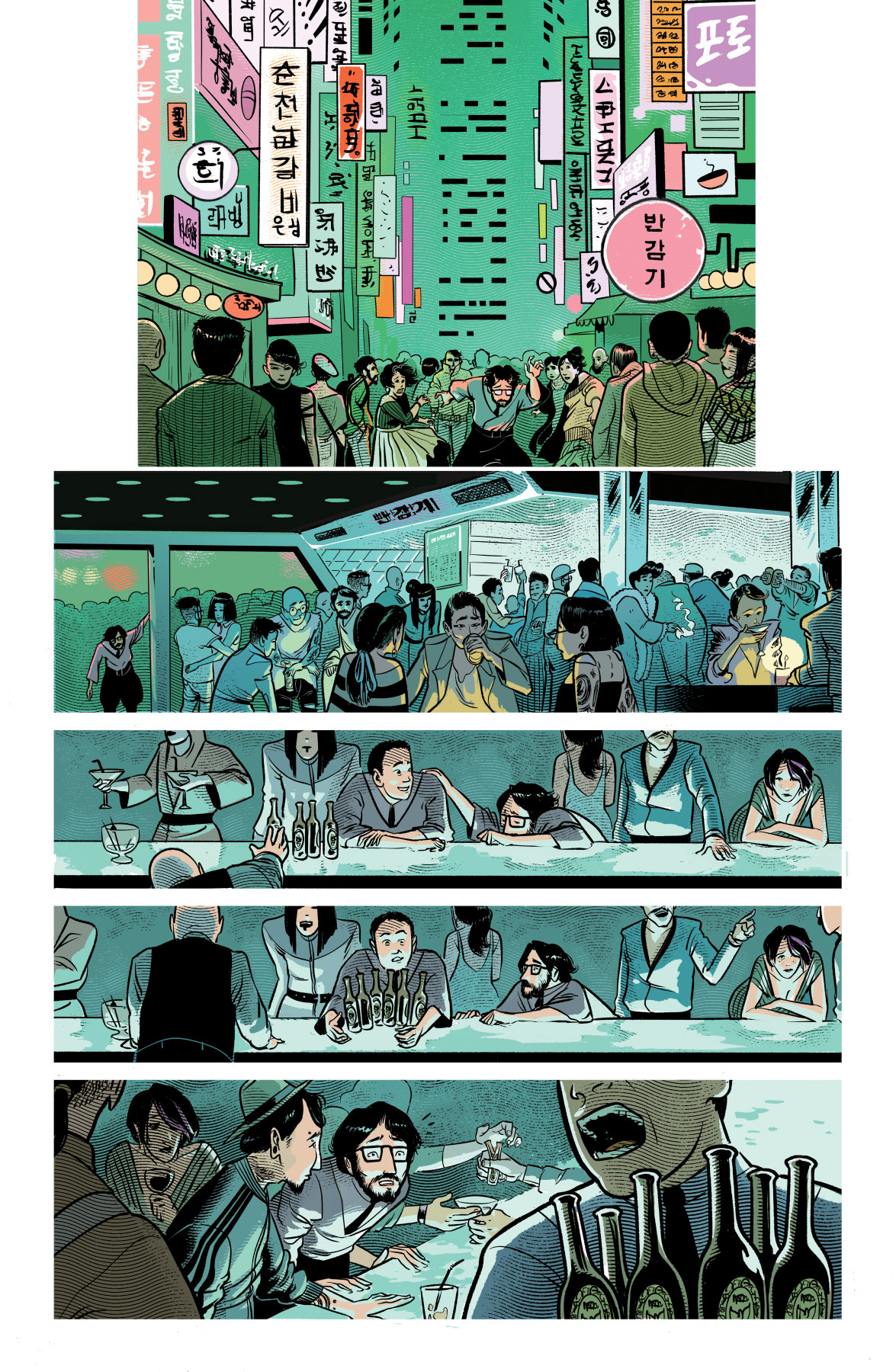
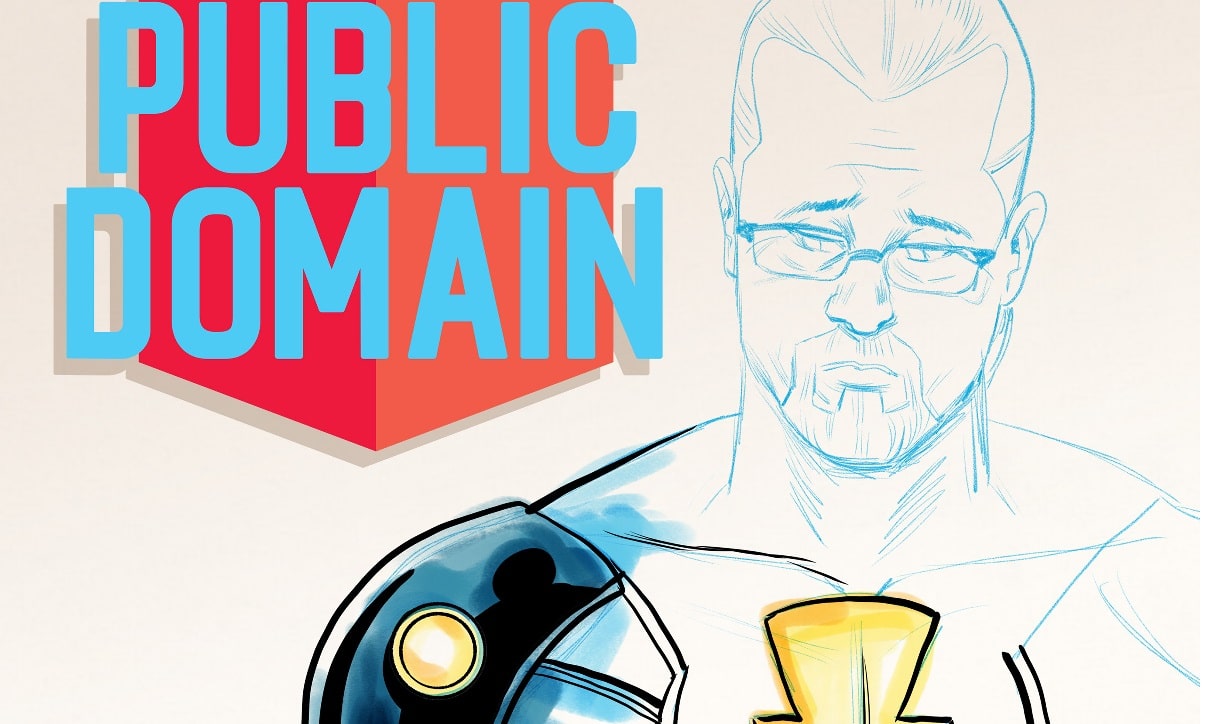
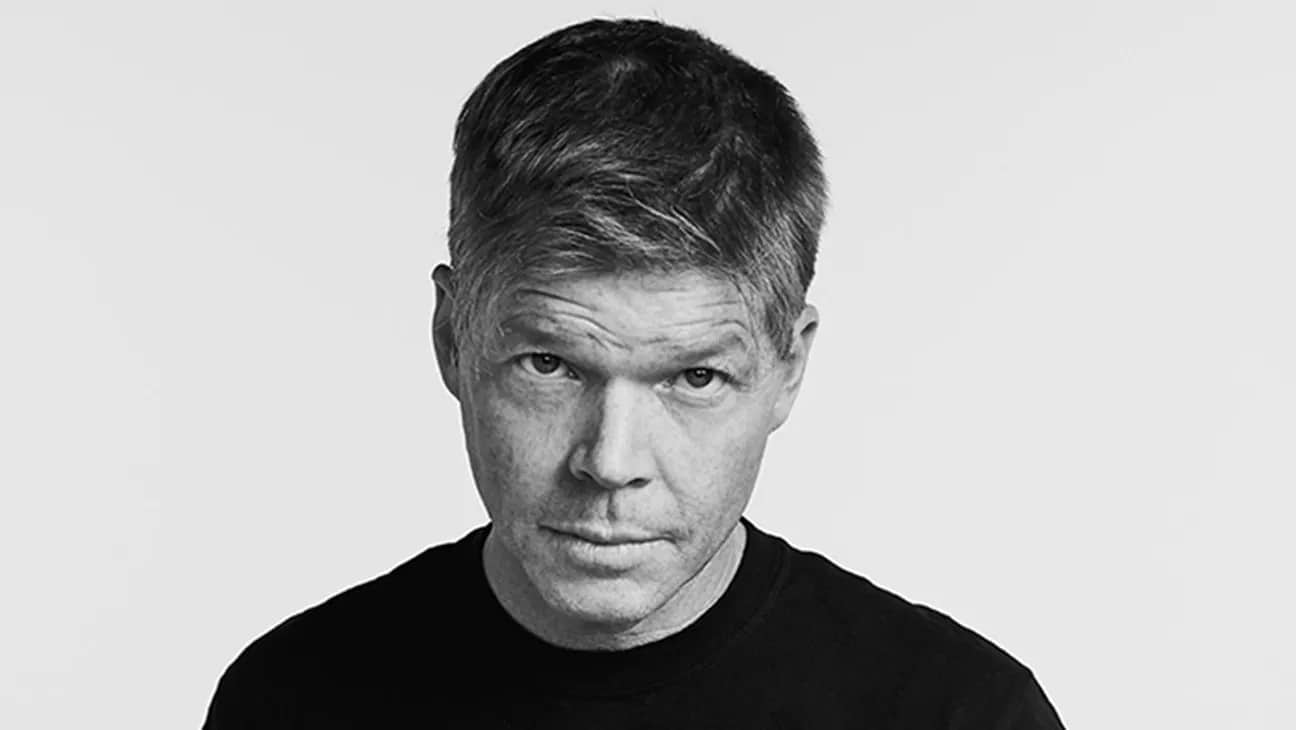
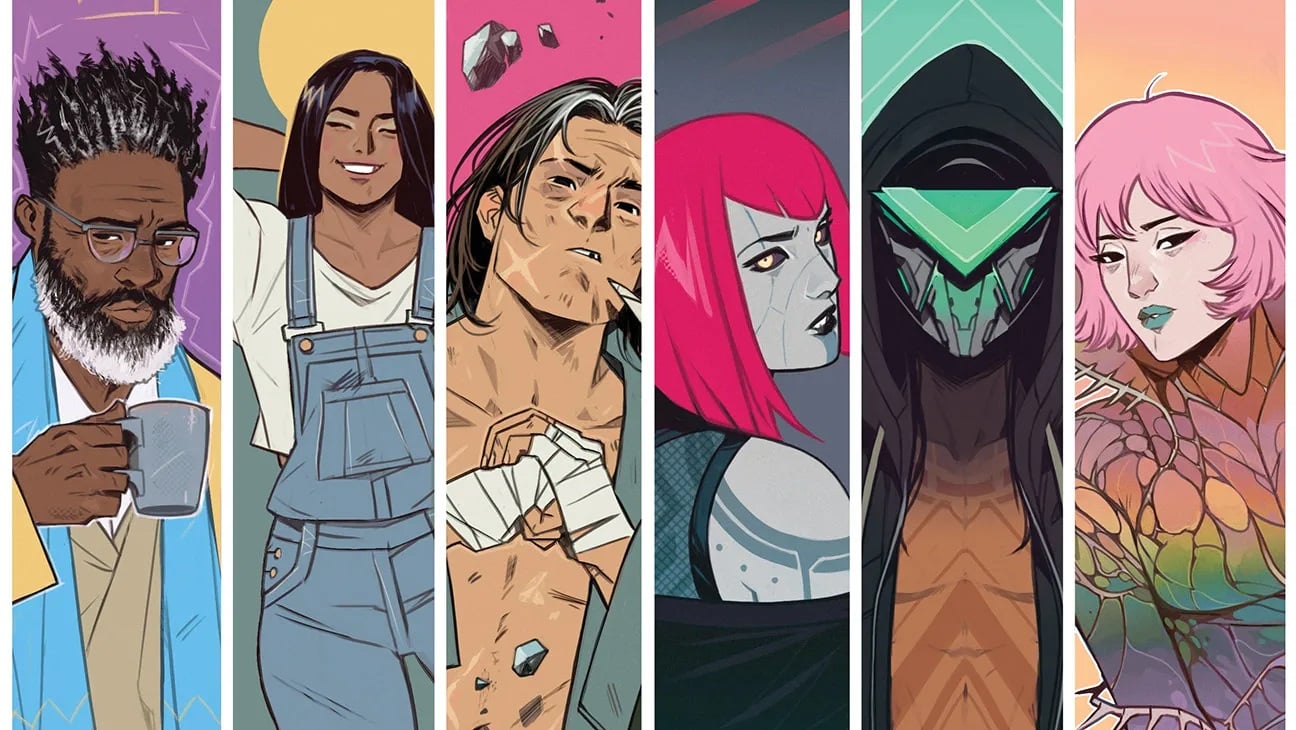



Looks fantastic! Congrats to Jeremy, George, and Adam on this gorgeous book. I especially love those colors!!!
Comments are closed.